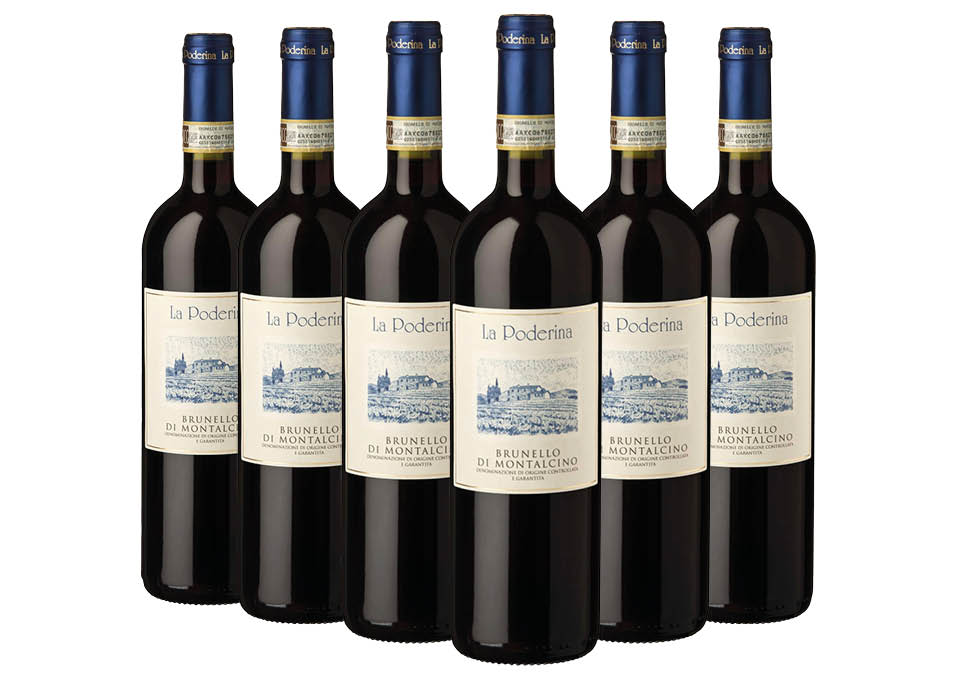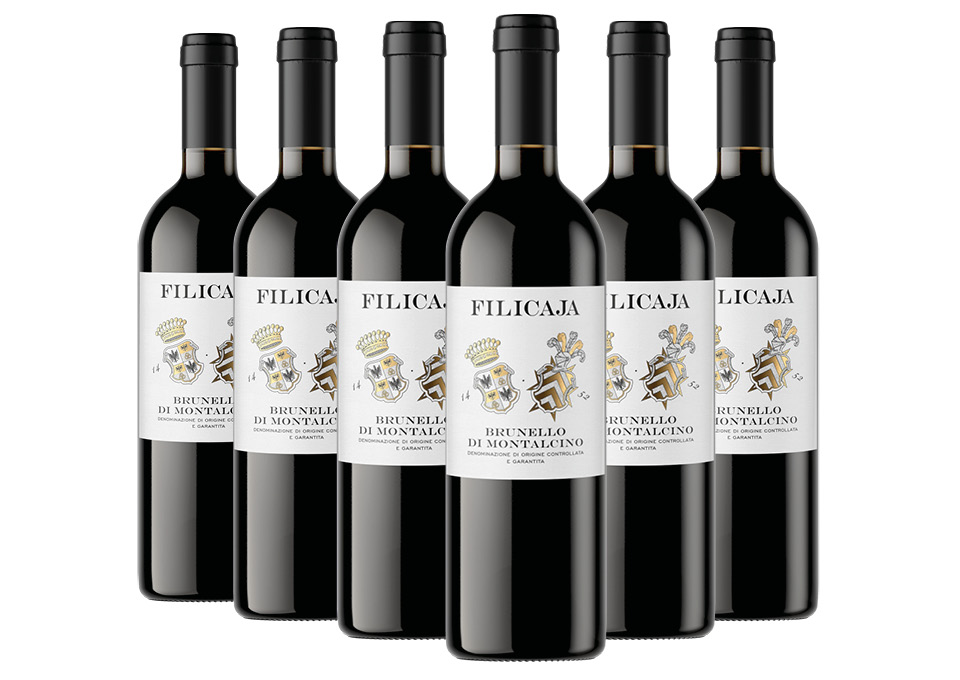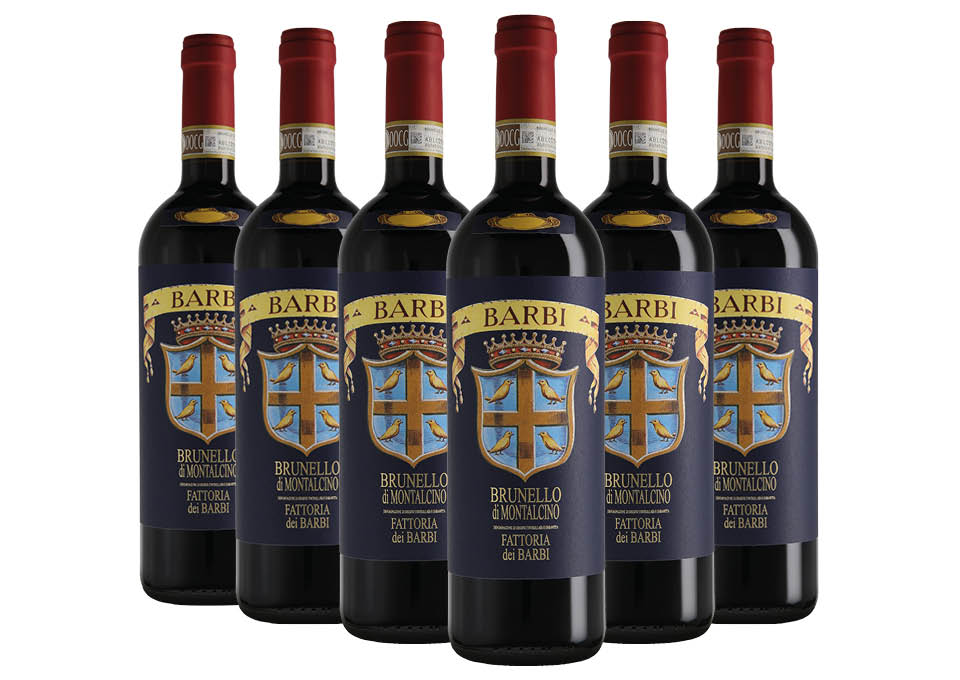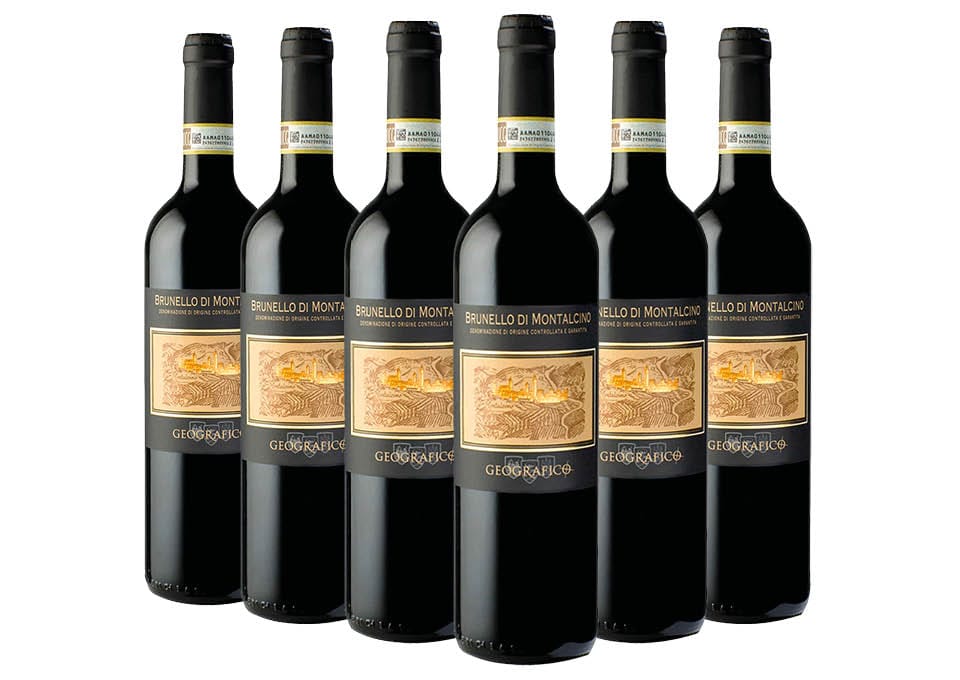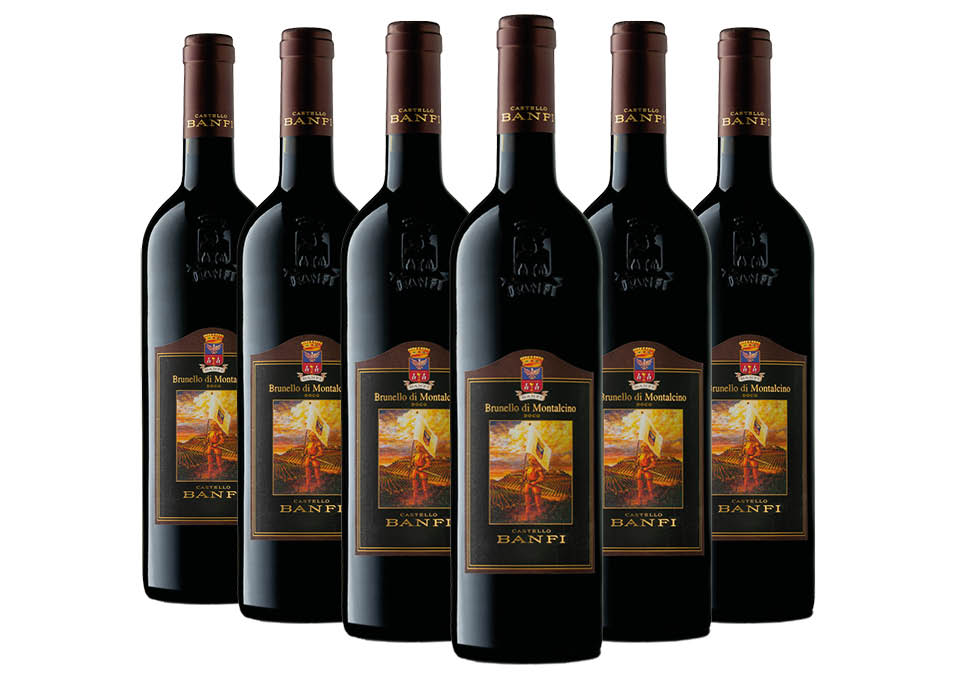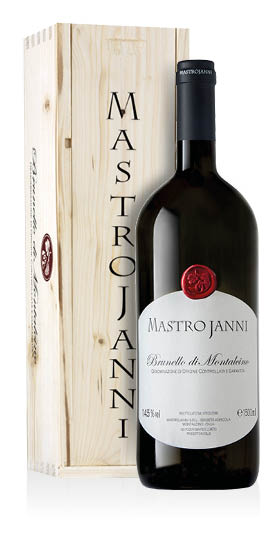Brunello Di Montalcino
Brunello is one of the most iconic wines in the world, it is produced only in Montalcino, in the province of Siena, in Tuscany. It can be obtained only from Sangiovese grapes, which in the municipality of Montalcino are called "Brunello". The first to vinify the "Brunello" grapes was Ferruccio Santi in the second half of the 19th century, producing for the first time what would become one of the most famous wines of all time. It was the first wine to obtain the DOC in 1960 and the DOCG in 1980. The production area, limited to the municipality of Montalcino, has contributed to making Brunello one of the most sought after and desired wines. Specifically, the cultivation area of the vineyards is located between 120 and 650 meters above sea level and the soils have very different geological characteristics, it is possible to find soils of sandstone, limestone, sandy, clayey or rich in marl. Brunello di Montalcino must undergo a long ageing, exactly five years after the harvest. What not everyone knows is that Brunello di Montalcino can have a Riserva version, in this case the years of ageing, before being put on the market, will be six instead of five. Brunello di Montalcino is characterized by a ruby red color tending to garnet and an intense and enveloping aroma of undergrowth, vanilla, jam and tertiary hints deriving from the long ageing in wood. It is a balsamic wine, with an important tannic texture and a high body. Despite the important structure it is a particularly balanced and harmonious wine, thanks to the sensation of freshness transmitted by the marked acidity. A Brunello can be recognized by its persistence, it is generally a very long wine, with a finish of licorice and juniper. The ageing of Brunello can take place in large barrels or in barriques, an aspect that determines the level of toasting. To properly taste a Brunello it is necessary to open the bottle at least an hour before and use a large glass to better perceive its aromatic complexity. Brunello di Montalcino is a particularly long-lived wine, depending on the vintage of the harvest it can be stored for 10 to 30 years, as long as it is properly stored, keeping the bottle in a horizontal position in a cool and not humid cellar.
Where to buy Brunello di Montalcino online
If you are looking for where to buy Brunello di Montalcino online you are in the right place. On Vino.com you can find a wide selection of the best Brunello di Montalcino wines. To name just a few, you can find the classic Brunello di Montalcino Biondi-Santi Tenuta Greppo, a wine with a bright, savory and persistent ruby red color; Brunello di Montalcino Banfi, a spicy, velvety and intense wine; Brunello di Montalcino Fattoria dei Barbi, a sapid, persistent wine with silky tannins and Brunello di Montalcino Collection of Count Villa da Filicaja, an elegant, dense and balsamic wine. In your trusted online wine shop you will find a very wide selection of Brunello di Montalcino, with unique characteristics and at competitive prices and suitable for all budgets. If you love traditional wines, you cannot fail to let yourself be enveloped by the majesty and body of Brunello di Montalcino. Discover the wines of the Brunello di Montalcino selection on Vino.com.
What is the vine and which are the grapes with which Brunello di Montalcino is produced?
Brunello di Montalcino can only be obtained from Sangiovese grapes, according to the provisions of the Production Regulations. Specifically, the grape variety with which Brunello is produced is a local clone of Sangiovese, present only in Montalcino and called Sangiovese Grosso, due to its thick-skinned berries. As you know, it is thanks to the peel that color, polyphenols and tannins are transferred to the wine, which is why maceration on the skins is very long and can last from 20 to 30 days. Thanks to the unique characteristics of the Sangiovese Grosso grapes, the Brunello di Montalcino wine has great vigor, structure and an excellent predisposition to ageing. The origins of the Sangiovese grape are quite uncertain. The most common hypotheses are three: that it is of Etruscan origin and that it comes from the area north of the Tiber and south of the Arno; that its name derives from the Sangiovannese word and that it is therefore a native of San Giovanni Valdarno; or that its name derives from Sanguegiovese, intended as the Blood of Jupiter, thus originating from the area of Monte Giove, near Santarcangelo di Romagna. What is certain is that over the decades, the adaptation of the Sangiovese grape to the different types of soil has endowed it with unique characteristics depending on the place where it is grown and that Brunello di Montalcino is universally recognized as the highest expression of its grapes. Discover our selection of Brunello di Montalcino on Vino.com.
What are the best vintages of Brunello di Montalcino?
From 1945 to today, all the vintages of Brunello di Montalcino produced have been evaluated. Each harvest is different, therefore it is possible to say that there are better and worse vintages of Brunello di Montalcino. Every year in January, the evaluation of the wine samples from the last harvest is carried out, in order to assign a score ranging from one to five stars to the reference year, which will be revealed during the famous annual "Benvenuto Brunello" event, held in Montalcino. Since 1992, the Consorzio del Brunello di Montalcino has created the ritual of the celebratory tile, a tile made by a famous person in the world of art, sport or entertainment, which is affixed to the wall of the Town Hall of Montalcino, showing the year and the number of stars assigned. In detail, if we take a look at the last twenty years, we can say that among the vintages of Brunello di Montalcino already on the market, five stars have been attributed to the 2016, 2015, 2012 and 2010 vintage. 2013 and 2011 are considered to be excellent vintages, as the committee of experts assigned a score of four stars out of five. On Vino.com you can find all the best vintages of Brunello di Montalcino, as well as the best producers of the appellation.




